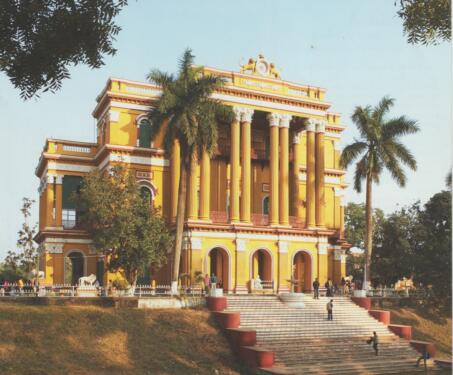

Remains of the Day: The forgotten city of Murshidabad
A conversation with author and historian Rosie Llewellyn-Jones about a city whose beauty decayed and grandeur faded even as history forgot its name

A conversation with author and historian Rosie Llewellyn-Jones about a city whose beauty decayed and grandeur faded even as history forgot its name
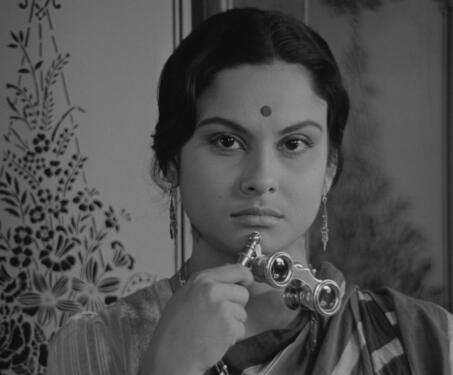
Kuhu Kopariha enters the cinematic universe of India’s great auteur to meet his women, see them through his eyes, and find her own reflection
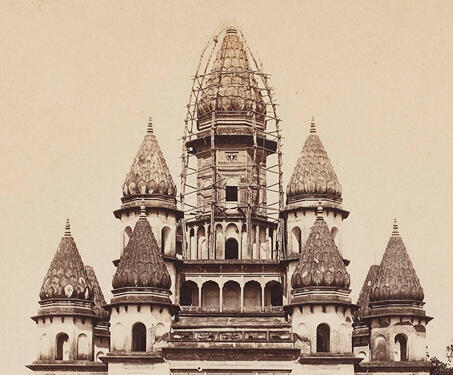
This picture shows the temple of Bansberia, also known as the Hangseswari temple, in the Hugli district of West Bengal. In 1792, Raja Nrisinhadeb Rai Mahasai of Bansberia came to Varanasi for retirement. Here, he approved a significant amount of money to raise a temple dedicated to Goddess Hamsesvari, an avatar of Goddess Kali, in Bansberia. He… Read more »
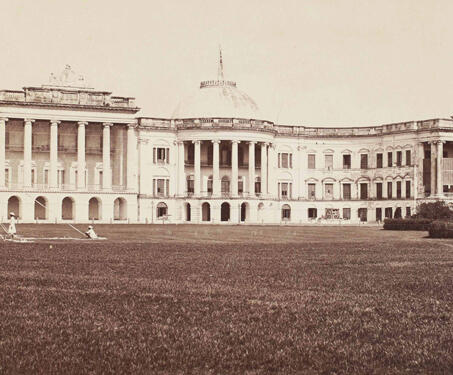
This is a photograph shows the Government House in Calcutta which became the Raj Bhavan of West Bengal after Independence. The Government House was built between 1799 and 1803 as the official residence of the Governor of Fort William, the 1st Marquess Wellesley, and remained the residence of the British Governors-General till 1911. The building’s… Read more »
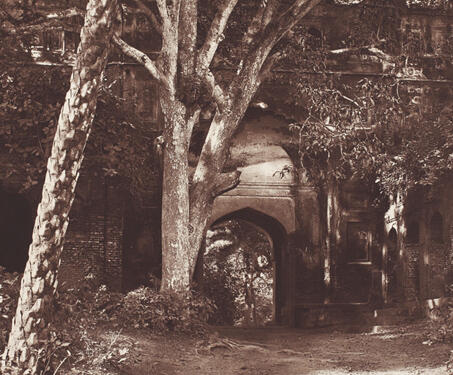
This gate is said to have been built in 1655 by Shah Shuja, and was noted by photographer John Henry Ravenshaw as being relatively more modern in architectural style than the rest of Gaur. The city itself was long deserted by then, its decline rooted in the sacking of Gaur by Sher Shah in 1539.… Read more »
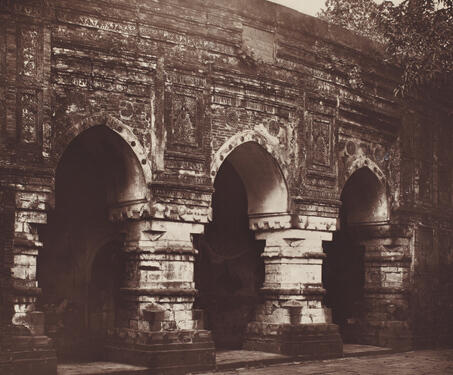
Built by Sultan Nusrat Shah in 1513 to house a stone representation of the footprint of the Prophet Mohammed, the Qadam Rasul Mosque is a one-domed square building located within the fort enclosure of Gaur. The relic, believed to have been originally brought by a saint from Arabia, was housed in Pandua before being brought… Read more »
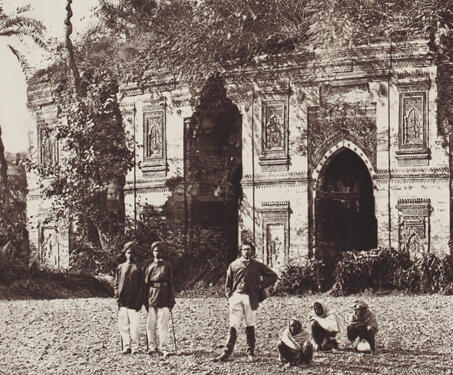
Tantipara, which means weavers quarters, is said to have been locally known as a mosque for Gaur’s weavers, a community essential to the city’s economy because of its location in a muslin-producing area. A brick building of uniform red and ornamented walls, the mosque is considered to have been erected in 1480. This photograph was… Read more »
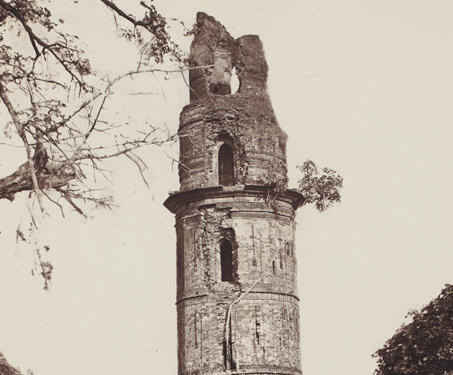
Firoz Minar is a five-storey-high structure estimated to have been built in Gaur during the late 15th century by Saifuddin Firuz Shah, the most revered of the Habshi rulers of Bengal. Much like the Qutub Minar, to which it is often compared, the structure was built to be a victory tower. Firuz Shah, known as… Read more »
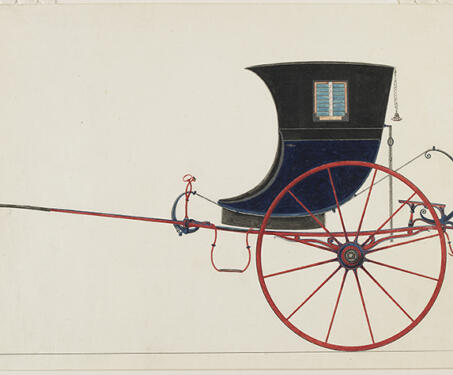
An interview with Dr Xavier Bray of the Wallace Collection to understand how Bengal came to play an important role in the evolution of the striking Company School paintings
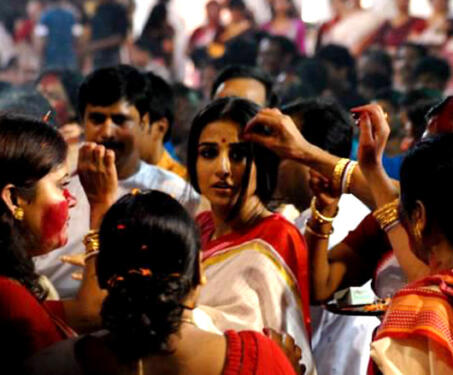
A land of memory and vision. A city of joy and heartbreak. A capsule of what was and what could have been. The cinemascape of Calcutta shows us all this and more
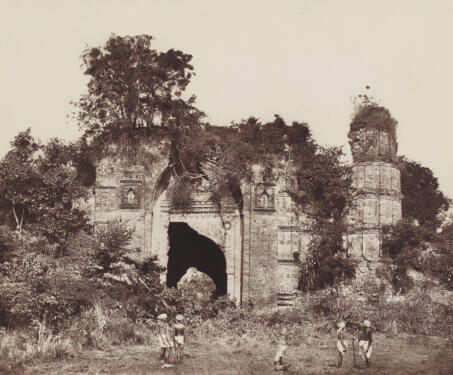
Built of small red bricks and with traces of extravagant ornamentation, the structure in this photograph was once the principal entrance gate to the Fort of Gaur from the north. Estimated to have been constructed in the early 15th century, the gateway is also known as Salami Darwaza, likely because salutes were fired from adjacent… Read more »
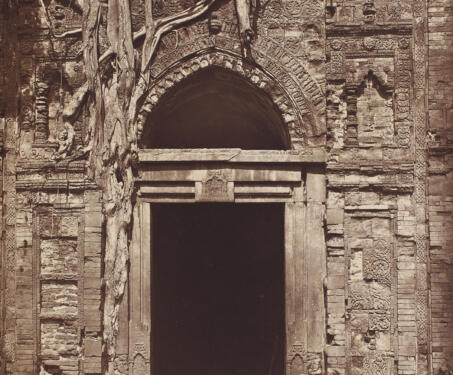
Presumably named Ekhlakhi because it is said to have cost one lakh rupees, this mausoleum in Gaur bears three tombs — considered to be those of Jalaluddin Muhammad Shah, his wife and his son. Shah was the son of Raja Ganesha, a Hindu ruler of Bengal who came to power in 1415, marking the end… Read more »
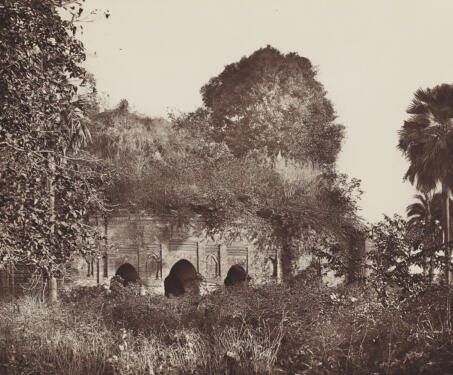
The Lattan Masjid or Painted Mosque of Gaur, pictured here, was once covered entirely with enameled brickwork in colours of green, yellow, blue and white. It is considered to have been built by Sultan Yusuf Shah, among the last of the Ilyas Shah rulers of Bengal in 1475, as per an inscription found in the… Read more »
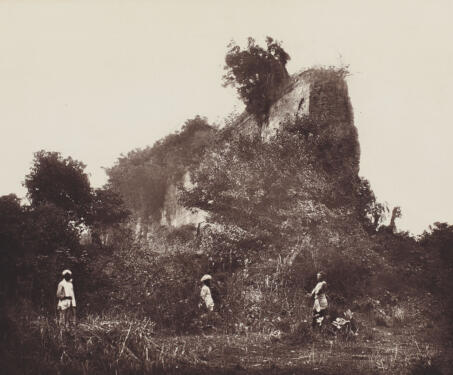
Named Baiz gazi possibly because it measured 22 Bengali gaz (yards) in height, these are the remains of the old palace enclosure located within the Fort of Gaur. The wall is said to have measured 700 yards in length from north to south and 230-300 yard in breadth, encircling the royal residence. The ancient city… Read more »
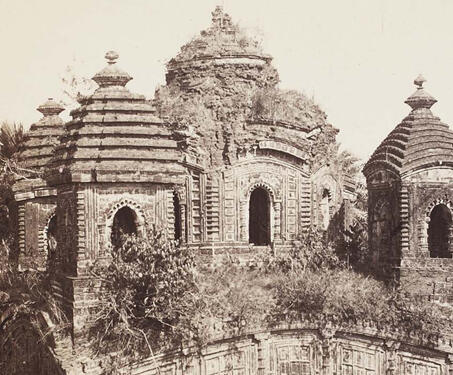
This picture shows the Shyam Rai Temple, regarded as a structural beauty amongst the Bishnupur Temple Complex in West Bengal. It was built during the reign of Raghunath Singha (1626 – 1656), a Malla King who is recognised to be a patron of art and architecture. The temple is a pancharatha temple with one main… Read more »
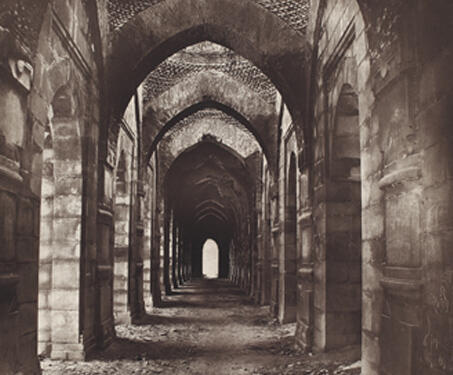
The ancient city of Gaur, also known as Gauda, Lakshmanavati, Lakhnauti and Jannatabad, served as the seat of many powerful dynasties over time – the Buddhist Pala kings from the 8th century onwards, the Hindu Sena kings from the 12th century on, eventually falling into the hands of the Delhi Sultanate in 1204. It thrived… Read more »
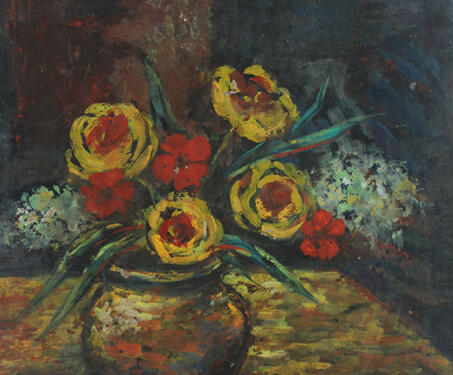
This painting is among the early works of Jamini Roy. Trained in European painting styles in the Government School of Bengal, Roy began his career with realistic oil portraits and post-impressionist landscapes. He produced several paintings in this style from 1905 to 1930s, but his later indigenous bent oeuvre overshadows them. One such painting in… Read more »
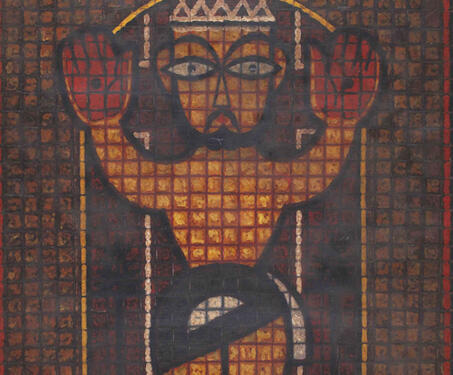
Jamini Roy was probably the first artist to depict Christ in an Indian vocabulary. He was looking to test the effectiveness of his bold line and flat colour technique on a subject which was remote from his personal life. Being an orthodox Hindu who had never read the old or new testaments, Roy saw the… Read more »
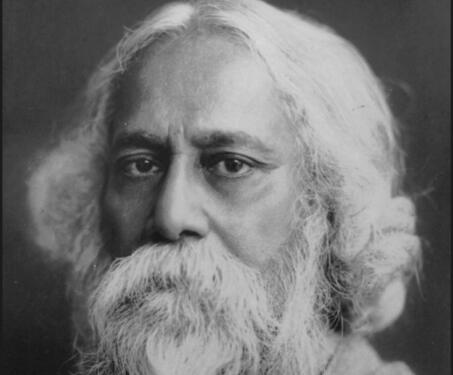
Something is daunted when one attempts to remember the bequests of India’s early multi-hyphenate on his death anniversary. A good profile should be a seamless whole of the inner and outer life of the poet, Rabindranath Tagore had said, commenting on Tennyson’s biography by his son, which he admonished for being full of trivialities. But… Read more »
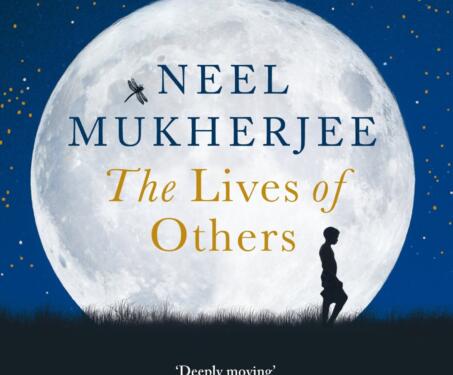
A highly subjective list of reads to wrap you snugly in a cocoon of Calcutta-coloured threads